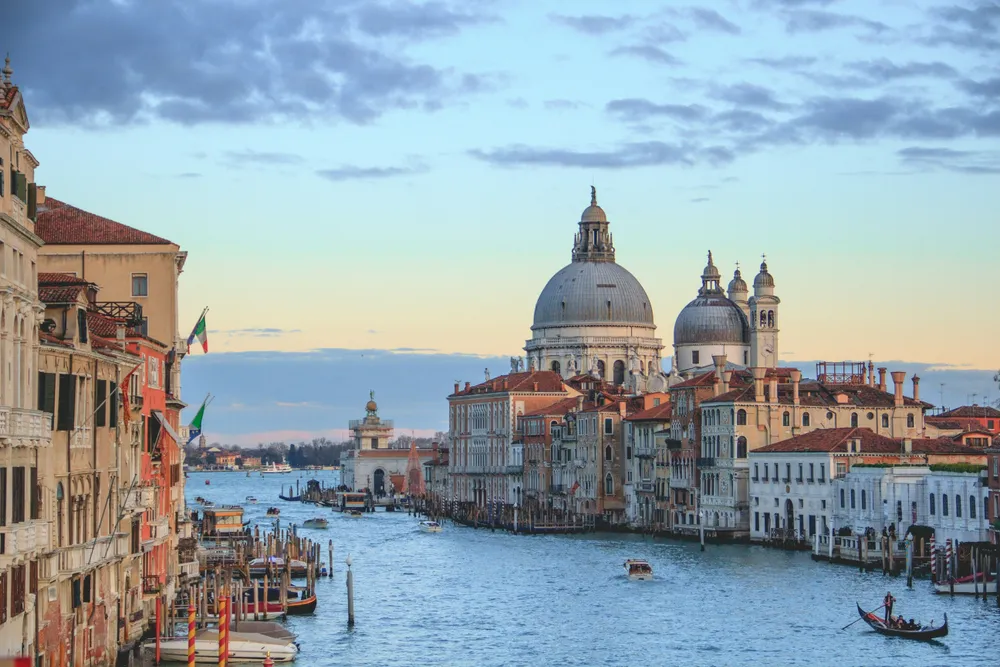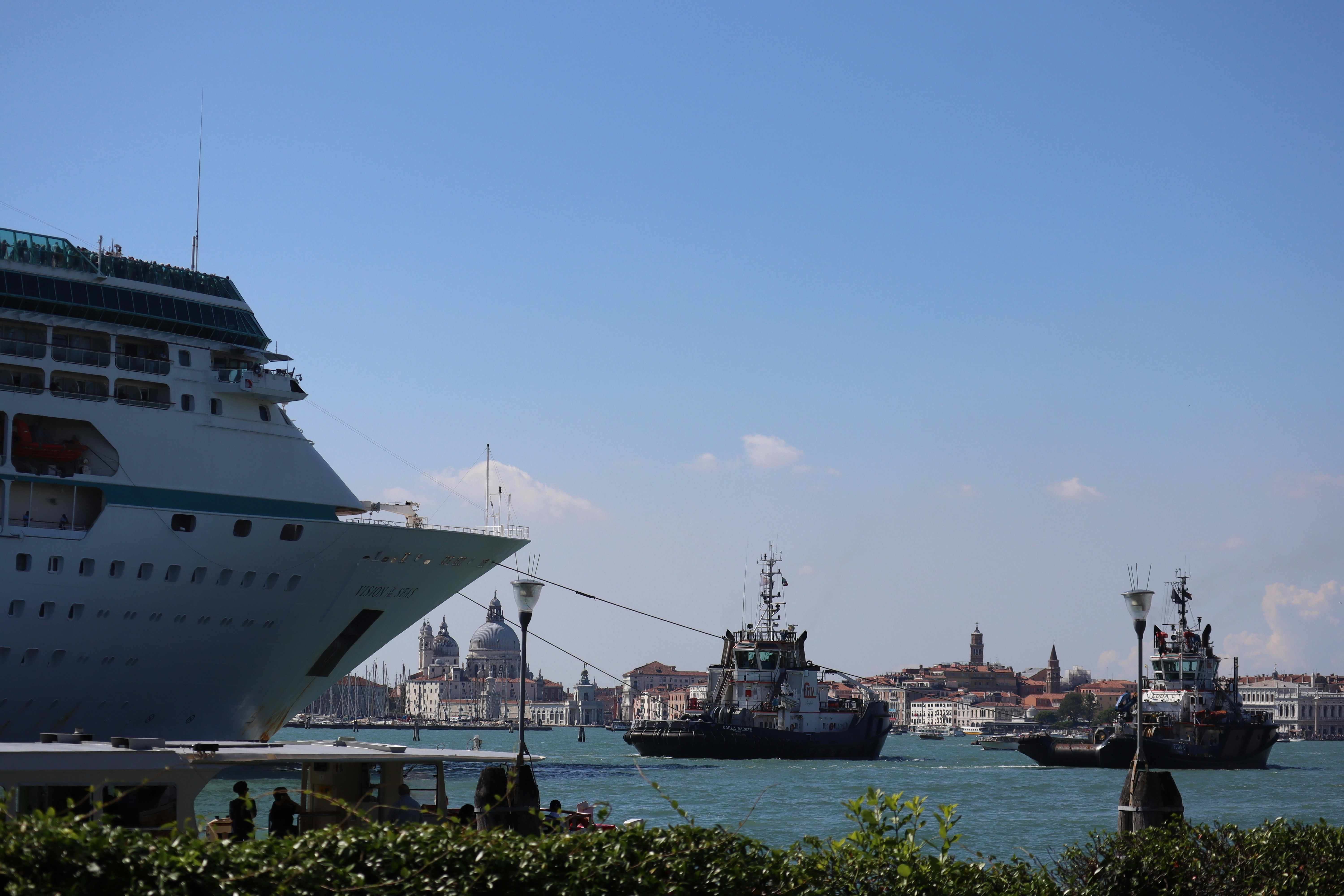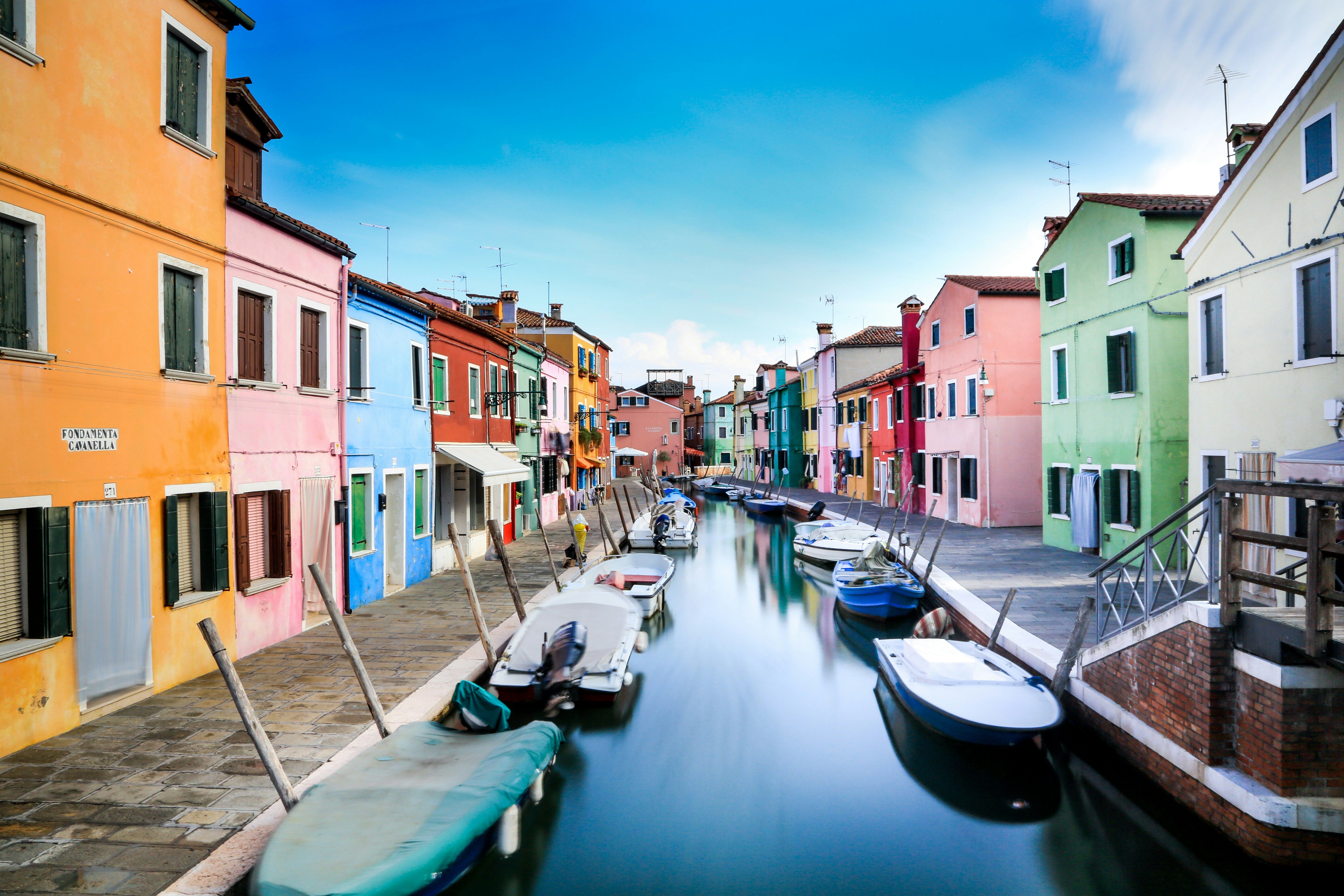Travelling from Rovinj to Venice: Complete Ferry & Travel Guide
Travel Guides
Travel Guides


Embarking on a journey from the charming Croatian coastal town of Rovinj to the romantic canals of Venice is a popular route for travellers exploring the Adriatic. Spanning approximately 152.4 km (94.7 miles) across the sparkling Adriatic Sea, this route offers both ferry and flight options for visitors. The ferry connection between these two stunning destinations provides a scenic and enjoyable travel experience, allowing you to arrive in Venice refreshed and ready to explore. This comprehensive guide covers everything you need to know about travelling from Rovinj to Venice, with a focus on the convenient ferry services that operate on this route, along with practical information to help you plan your perfect trip.
When planning your journey from Rovinj to Venice, you have several transportation options to consider, with ferries being the most direct and scenic choice.
Ferry travel is the most popular option for this route, offering a relaxing journey across the Adriatic. The ferry route between Rovinj and Venice spans approximately 82.3 nautical miles and typically takes around 2 hours and 44 minutes to complete. Kompas is the primary operator servicing this route, offering the fastest crossing time of just 15 minutes for certain services, though this appears to be for a specific segment of the journey rather than the complete crossing.
Ferry prices for the Rovinj to Venice route start at around £249 per person, which may vary depending on the season, with higher prices typically during the summer months when demand is at its peak. The route operates on a seasonal basis, with more frequent sailings during the tourist high season.
With approximately 1 sailing per day during operating season, 3 weekly sailings, and 11 monthly connections, the ferry service provides regular but limited options, so booking in advance is recommended, especially during peak travel periods.

Travelling by ferry offers distinct advantages over other transportation methods. The journey itself becomes part of your travel experience, allowing you to enjoy breathtaking views of the Adriatic coastline and approach Venice from the water – arguably the most spectacular way to first see this unique city. Ferry travel also eliminates the stress of airport security procedures and city transfers that come with flying.
You can take a ferry from Rovinj to Venice. Ferries sail in around 2 hours and 44 minutes with about 1 sailing a day during the operating season. The fastest ferry sails in around 15 minutes for certain segments and is provided by Kompas. Ferry prices typically start from around £249 depending on the season and booking time. Departures start as early as 07:00, with the last departure from Rovinj to Venice at 08:15.
Kompas is the main operator on the Rovinj to Venice route, offering seasonal service primarily during the warmer months. Their vessels are designed to provide a comfortable crossing experience across the Adriatic.
The ferries operating between Rovinj and Venice typically offer a range of amenities to ensure a comfortable journey:
It's important to note that the Rovinj to Venice ferry route operates seasonally, with most services running between April and October. During peak summer months (June-August), we recommend booking your ferry tickets well in advance as this popular route can sell out quickly. The shoulder seasons of late spring and early autumn often provide a more relaxed travel experience with fewer crowds while still offering pleasant weather conditions for your crossing.
Rovinj's ferry port is conveniently located near the historic centre of this picturesque Croatian town. The port is within walking distance of many hotels and accommodations in the Old Town area.
Getting to Rovinj Port:
Port Facilities:
We recommend arriving at the port at least 60 minutes before your scheduled departure to allow time for check-in and boarding procedures.
Ferries from Rovinj typically arrive at Venice's San Basilio terminal or the main maritime station (Stazione Marittima), depending on the specific service.
From Venice Port to the City:
Port Facilities:
Upon arrival, you'll find yourself immersed in the unique atmosphere of Venice, with its network of canals, historic buildings, and vibrant culture just waiting to be explored.
While a day trip from Rovinj to Venice is technically possible, it requires careful planning due to the limited ferry schedule. With the earliest departure from Rovinj at 07:00 and considering the crossing time of approximately 2 hours and 44 minutes, you would arrive in Venice around mid-morning.
For a day trip, we recommend taking the earliest possible ferry from Rovinj, which would give you approximately 6-8 hours to explore Venice before needing to return. This is sufficient time to see some of the main highlights, though you would need to plan your itinerary efficiently.
A sample day trip itinerary might include:
For a more relaxed experience, we recommend staying at least one night in Venice. This allows you to experience the city in the evening when day-trippers have departed and to see more of its magnificent attractions without rushing.

St. Mark's Square and Basilica - The heart of Venice and home to the magnificent Byzantine basilica. The square is surrounded by historic buildings and cafés. Open: 9:30 AM-5:00 PM (Basilica); the square is always accessible.
Doge's Palace - Once the residence of the Doge of Venice, this Gothic masterpiece now houses an impressive museum. The secret itineraries tour takes you through hidden passageways and chambers. Open: 8:30 AM-7:00 PM.
Grand Canal - Venice's main waterway lined with stunning palaces and historic buildings. Experience it by vaporetto or splurge on a gondola ride for a more intimate perspective.
Rialto Bridge and Markets - The oldest bridge spanning the Grand Canal, surrounded by vibrant markets selling fresh produce, seafood, and souvenirs. The markets are typically open 7:30 AM-1:30 PM.
The Islands of Murano, Burano, and Torcello - If you're staying overnight, take a vaporetto to these charming islands known for glass-making, colourful houses, and ancient churches respectively.
San Marco - The tourist heart of Venice, home to the city's most famous landmarks including St. Mark's Square and the Doge's Palace. Expect crowds but also some of the city's most magnificent architecture.
Dorsoduro - A slightly less crowded district with a youthful vibe thanks to the university. Home to the Accademia Gallery and the Peggy Guggenheim Collection for art lovers.
Cannaregio - Where many locals live, offering a more authentic Venetian experience with neighbourhood restaurants and the historic Jewish Ghetto.
Castello - The largest district, with its eastern portions remaining largely untouched by mass tourism. Perfect for escaping the crowds while still enjoying beautiful architecture and local cafés.
San Polo - Home to the Rialto Markets and Bridge, this compact district offers a maze of narrow streets filled with shops and restaurants.
Venice experiences a humid subtropical climate with warm summers and cool winters. Understanding the seasonal weather patterns can help you plan your ferry journey and activities in Venice more effectively.
Summer (June-August): Peak tourist season brings average temperatures between 18-28°C (64-82°F). These warm, sunny days are perfect for exploring, though humidity can make afternoons feel quite hot. This is also when ferry services between Rovinj and Venice are most frequent.
Spring (March-May) and Autumn (September-November): These shoulder seasons offer milder temperatures ranging from 10-22°C (50-72°F) and fewer crowds. The weather is generally pleasant for sightseeing, though spring can bring occasional rainfall. Ferry services typically operate during these periods but with reduced frequency compared to summer.
Winter (December-February): Venice becomes misty and atmospheric with temperatures between 0-10°C (32-50°F). The famous 'acqua alta' (high water) is most common in winter, particularly November to January, when parts of the city may experience flooding. Ferry services between Rovinj and Venice are limited or suspended during winter months.
The weather can occasionally impact ferry operations, particularly during winter storms or periods of strong bora winds in the northern Adriatic. Always check the forecast before travelling and confirm your ferry service is operating as scheduled.
Venice has a reputation as one of Europe's more expensive destinations, but with careful planning, you can enjoy this unique city across various budget levels.
Budget traveller: Expect to spend around £80-£100 per day including modest accommodation outside the main tourist areas, self-catering or inexpensive cafés, and focusing on free attractions and walking tours. Water bus passes (rather than private water taxis) will help keep transportation costs down.
Mid-range traveller: A budget of £150-£200 per day would allow for comfortable accommodation, dining in good local restaurants, entry to major museums and attractions, and some guided tours.
Luxury traveller: £300+ per day would provide for luxury hotel accommodations, fine dining experiences, private guided tours, and water taxi transportation.
Sample costs:
To save money, consider visiting during shoulder season, staying in Mestre on the mainland, purchasing a vaporetto pass for your stay, and enjoying cicchetti (Venetian tapas) instead of full restaurant meals.

The ideal time to visit Venice depends on your preferences for weather, crowds, and events.
Peak Season (June-August): The summer months bring warm weather and the fullest ferry schedule between Rovinj and Venice. However, this is also when Venice experiences its largest crowds and highest prices. The city can feel quite congested, particularly around major attractions, and the summer heat combined with canal odours can occasionally be unpleasant.
Shoulder Seasons (April-May and September-October): These periods offer the best balance of pleasant weather, moderate crowds, and reasonable prices. Many travellers consider late April, May, September, and early October to be the perfect times to visit Venice. Ferry services are still operating regularly, and you'll enjoy more space to explore the city's treasures.
Off-Peak (November-March): Winter brings a more authentic, local experience with significantly fewer tourists. Venice takes on a mystical quality with winter mists, and you'll find much better deals on accommodation. However, ferry services from Rovinj are limited or non-existent during this period, and some attractions may have reduced opening hours. Be prepared for potential acqua alta (flooding) events, particularly in November and December.
Festival considerations: Venice hosts several world-famous events that are worth planning around, either to experience or avoid depending on your preferences:
For most visitors, we recommend planning your ferry journey from Rovinj to Venice in May, June, September, or early October for the best overall experience, balancing good weather, regular ferry service, reasonable crowds, and full operation of attractions.
Finding the right place to stay in Venice can enhance your ferry journey from Rovinj. The city offers diverse accommodation options to suit every budget and preference.
For budget-conscious travellers, consider staying in Mestre on the mainland, where prices are significantly lower than in central Venice. Hostels in Cannaregio or Dorsoduro districts offer affordable beds starting from £25 per night. Solo travellers will appreciate the social atmosphere at Generator Venice on Giudecca Island.
Couples seeking romance might enjoy boutique hotels in quieter neighbourhoods like Castello, with mid-range options starting around £100-150 per night. For families, spacious apartments in Santa Croce or Cannaregio provide kitchen facilities and more space, typically ranging from £150-250 per night depending on the season.
Book accommodation well in advance if travelling during summer months when the Rovinj-Venice ferry route is operational, as prices increase significantly during this peak period.
Venice offers a unique transportation system centred around its famous waterways. The primary public transport is the vaporetto (water bus), with line 1 traveling the Grand Canal and stopping at major landmarks. A single journey costs around £7.50, but consider a 24-hour pass for £20 if making multiple trips.
Walking is arguably the best way to explore Venice, with the entire historic centre being pedestrianised. Comfortable shoes are essential as you navigate the labyrinth of narrow streets and bridges.
Water taxis provide convenient but expensive transportation, with fares starting at £60 for short journeys. They're worth considering when arriving with heavy luggage after your ferry journey from Rovinj.
For day trips to nearby islands like Murano or Burano, regular vaporetto services are available with your standard public transport ticket.
Travelling from Rovinj to Venice by ferry offers a spectacular journey across the Adriatic, connecting two of the region's most charming coastal destinations. With ferries operating the crossing in approximately 3.5 hours and prices varying seasonally, this sea route provides a scenic and relaxing alternative to driving around the Adriatic coast.
Whether you're planning a multi-destination itinerary or a focused city break, the ferry creates a seamless connection between Croatia's picturesque Istrian peninsula and Italy's iconic floating city. With weekly sailings during the operational season, you can easily incorporate this crossing into your travel plans.
Ready to experience this unique Adriatic journey? Book your Rovinj to Venice ferry tickets today to secure your preferred sailing date and enjoy the perfect blend of Croatian and Italian coastal charm.